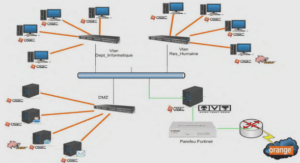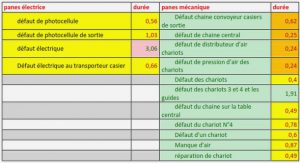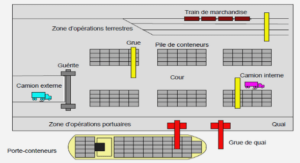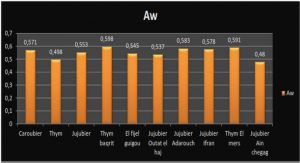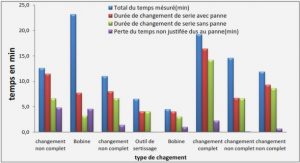Corrosion of Aluminum Metal Matrix Composites
Galvanic Corrosion of Metal Matrix Composites Associated With Dissimilar Materials
As non-structural neutron absorber materials used to fabricate the inside basket of spent fuels storage racks or transportation casks, AAHOO-B4C MMCs are often assembled with structural materials AA6061 or SS304. Consequently, the AAHOO-B4C MMCs are galvanically coupled with AA6061 or SS304, which accelerates the corrosion of the less noble material, especially when they are used in the spent nuclear fuel wet storage application, where the assemblies are immersed in the mildly corrosive reactor pool water (one of which is the boric acid with B concentration of -2500 ppm).
As reported, the potential difference of two materials is considered to be the driving force of the galvanic corrosion. The extent of galvanic corrosion between two or more dissimilar materials also depends on the effective area ratio of coupled dissimilar materials, the cathodic efficiency and polarization characteristics of the nobler material, solution conductivity, oxygen content in the solution, the temperature and stability of passive films. t37′ 381 Mansfeld et al. [39’40] studied the galvanic corrosion of Al alloys and other dissimilar metals or alloys to establish the galvanic series based on the quantitative measurements of dissolution rate of the metals in a galvanic couple. In a consequent series studies, they investigated the effect of the corrosive environment, {i.e. distilled water, tap water and 3.5% NaCl solution) ^ and effect of area ratio on the galvanic corrosion. ^
Corrosion Prevention
There are lots of methods used to prevent corrosion. In fact, these methods could not prevent the corrosion completely, but they do reduce the corrosion to a minimum value. Here gives a brief introduction to several of them.
(1) Coatings. Coatings are the most widely used corrosion control technique. Essentially, this technique is a means for separating the surfaces that are susceptible to corrosion from the factors in the environment which cause corrosion. However, that protective coating can never provide 100 percent protection of 100 percent of the surface.
According to the coating materials, it is divided into three types: (1) metallic coatings, it includes electroplating, galvanising, metal spray coatings; (2) non-metallic coatings, like anodizing and conversion coatings; (3) organic coatings, such as claddings and paint.
(2) Cathodic protection. This corrosion prevention method is based on the concepts of an electrochemical cell, in which the metal to be protected is a cathode in the cell. This could be achieved by using a sacrificial anode or by using a DC current.
Anodic protection. In this method, the metal to be protected is placed as anode. The corrosion product will precipitate on the surface of the anode and form a protective film with uniform distribution. In this process, the environment should be homogeneous in all places on the surface of the metal, and the current distribution on the surface should be uniform.
Use of Inhibitors. Corrosion inhibitors are those organic or inorganic chemical species which when added to the environment in small amount, they reduce the corrosion rate. Inhibitors could react with the surface of a material decreasing the material’s corrosion rate, or interact with the operating environment to reduce its corrosiveness. Corrosion inhibitors interact with the metal, slowing the corrosion process by: (1) shifting the corrosion potential of the metal’ surface towards either the cathodic or anodic direction; (2) preventing permeation of ions into the metal and (3) increasing the electrical resistance of the surface. Addition of inhibitors is only effective for general corrosion but not for localized corrosion.
|
Table des matières
RESUME
ABSTRACT
PUBLICATIONS
ACKNOWLEDGEMENTS
TABLE OF CONTENTS
LIST OF TABLES
LIST OF FIGURES
CHAPTER 1 : INTRODUCTION
1.1 Definition of the Problem
1.2 Objectives
References
CHAPTER 2 : LITERATURE REVIEW
2.1 A1-B4C Composites
2.1.1 Fabrication Process of Al-B4CMMCs
2.1.2 Interfacial Reactions Between Al matrix and B4C Composites
2.1.3 Applications of AI-B4C MMCs in the Nuclear Industry
2.2 Forms of Corrosion
2.3 Corrosion of Aluminum Metal Matrix Composites
2.4 Galvanic Corrosion of Metal Matrix Composites Associated With Dissimilar Materials
2.5 Corrosion Prevention
2.6 Basic Aspects of Electrochemical Processes
2.6.1 Electrical Double Layer
2.6.2 Three-Electrode Cell
2.7 Corrosion testing and evaluation techniques
2.7.1 Potentiodynamic Polarization
2.7.2 Electrochemical Impedance Spectroscopy (EIS)
2.7.3 Zero Resistance Ammetry
References
CHAPTER 3 : EXPERIMENTAL PROCEDURES
3.1 Sample Preparation and Solutions
3.2 Electrochemical Experiments
3.3 Microstructural Analysis
3.4 Infrared Reflection-Absorption Spectroscopy
3.5 X-Ray Photoelectron Spectroscopy
References
CHAPTER 4 : CORROSION BEHAVIOUR OF A1-B4C METAL MATRIX COMPOSITES IN H3BO3, K2SO4 AND NaCl SOLUTIONS
Abstract
4.1 Introduction
4.2 Materials and Methods
4.3 Results and Discussion
4.3.1 Potentiodynamic Polarization
4.3.2 Electrochemical Impedance Spectroscopy
4.4 Conclusions
References
CHAPTER 5 : INVESTIGATION ON CORROSION BEHAVIOR OF THE A1-B4C METAL MATRIX COMPOSITES IN A MILDLY OXIDIZING AQUEOUS ENVIRONMENT
Abstract
5.1 Introduction
5.2 Experimental Procedure
5.2.1 Material Preparation
5.2.2 Electrochemical Experiments
5.2.3 Microstructural Analysis
5.2.4 Infrared Reflection-Absorption Spectroscopy
5.2.5 X-Ray Photoelectron Spectroscopy
5.3 Results and Discussion
5.3.1 Potentiodynamic Polarization of A1-B4C MMC in K2SO4 and NaCl Solutions
5.3.2 Electrochemical Impedance Spectroscopy Investigation of AI-B4C MMC in 0.5 M K2SO4
5.3.3 Morphology and Characterization of Corrosion Products 101
5.4 Conclusions
References Ill
CHAPTER 6 CORROSION INHIBITION OF A1-B4C METAL MATRIX COMPOSITES IN A NaCI SOLUTION BY BENZOTRIAZOLE
Abstract
6.1 Introduction
6.2 Experimental Procedures
6.2.1 Preparation of Samples and Electrolytes
6.2.2 Electrochemical Measurements
6.2.3 Infrared Reflection-Absorption Spectroscopy
6.3 Results and Discussion
6.3.1 Effect of BTAH on the Inhibition Efficiency
6.3.2 Effect of B4C Particle Volume Fraction on The inhibition Efficiency
6.3.3 Effect of Immersion Time
6.3.4 Electrochemical Impedance Spectroscopy (EIS) Measurements
6.3.5 Infrared Reflection Absorption Spectroscopy (IRRAS)
6.3.6 Adsorption Isotherm
6.4 Conclusions
References
CHAPTER 7 GALVANIC CORROSION ASSOCIATED WITH A1-B4C COMPOSITES/SS304 AND A1-B4C COMPOSITES/AA6061 COUPLES IN NaCI AND H3BO3 SOLUTIONS
Abstract
7.1 Introduction
7.2 Experimental Procedure
7.2.1 Sample Preparation
7.2.2 Galvanic Coupling Measurement
7.3 Results and Discussion
7.3.1 Open Circuit Potentials of Uncoupled Materials
7.3.2 Effect of Dissimilar Materials
7.3.3 Effect of Solution
7.3.4 Effect of Area Ratio
7.4 Conclusions
References
CHAPTER 8 CONCLUSIONS & RECOMMENDATIONS FOR FUTURE WORK
8.1 Conclusions
8.2 Recommendations for Future Works
![]() Télécharger le rapport complet
Télécharger le rapport complet

